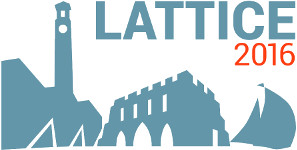Speaker
Mr
Bardiya Bahrampour
(Justus-Liebig University Giessen)
Description
The strong coupling expansion of the lattice gauge action leads to a Polyakov loop model that effectively describes the gluodynamic at low temperatures and together with the hopping expansion of
the fermion determinant allows for insights into the QCD phase diagram at finite density and low temperatures, although the accessible pion masses are rather large.
At high temperatures the strong coupling expansion breaks down and it is expected that the interaction of Polyakov loops becomes non-local.
Therefore we use inverse Monte-Carlo methods to map pure SU(2) gluodynamic to different non-local Polyakov models . We take into account Polyakov loops in higher representations and gradually add interaction terms at larger distances to investigate how well we can describe the full theory. Particularly we are interested in the behaviour of those models when extrapolating the dependency of non-local terms and higher represenations, especially in the large volume limit. We try to find connections between the strength of the coupling of the non-local terms (with respect to the interaction distance) and the correlation length of the full theory at a given value of the gauge coupling in order to compare our results to existing proposals for non-local effective actions.
Authors
Mr
Bardiya Bahrampour
(Justus-Liebig University Giessen)
Dr
Bjoern Wellegehausen
(ITP University Giessen)
Prof.
Lorenz von Smekal
(Justus-Liebig University Giessen)

